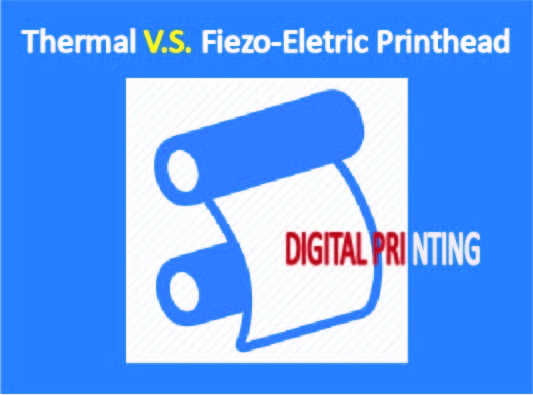How to choose your digital printhead?

Nozzles, picoliter, thermal printhead, piezo-electric printhead, drop-on-demand(DoD), continuous inkjet, binary, greyscale are specification describing the digital printhead. Understanding the meaning of these terms will help you understand how the printer operates and will help you to select the right digital printhead for the right job. However, it is rare that for supplier to stop and explain them. So here is where we stop and explain it to you.
Continuous vs. Drop-on-Demand(DoD)
Each printhead has hundred and sometimes thousands of nozzles that are projecting inks onto the media or substrate. Each nozzle is typically around 20-50micron wide. A human hair is roughly 80 micron wide. In a continuous inkjet, the nozzle projects a continuous stream of ink droplets when the printer is running. Ink would be deflected from the substrate through electrostatic plates or air bubbles in areas where ink is not needed. Unwanted ink is collected in a gutter to be returned to the storage tank. This type of inkjet is suitable for printing bar codes and markings that does not have sophisticated graphics. Drop-on-Demand inkjets is the most common type of inkjet on the market. This type of inkjet projects inks onto the substrate only when needed.
Binary V.S Greyscale
When the nozzles of the printhead projects inks droplets onto the substrate. Binary refers to generating ink droplets of all the same size. This type of process is not good for printing highlights on the graphics. The amount of ink droplets is measured by picolitres. Binary projects around 30~200 picolitres per droplet. Greyscale can generate droplet of different size. Through the usage of droplet of different sizes high definition graphics could be produced. A 360dpi greyscale print can have the same effect as a 1000dpi on binary.
Thermal printhead VS piezo-electric printhead
Drop-on-Demand inkjet (DoD), at the high level has two different types of printhead, thermal and piezo-electric. Thermal printhead projects the ink through thermal properties. An element is heated inside the ink chamber, to the point that the liquid ink vaporizes and forms a bubble. The bubble then pushes the ink droplet out of the nozzle. The heat element is turned on and off to control the release of the print droplets. Thermal printhead is usually binary, meaning each ink droplet is of the same size. Due to the constant heating of the element, the life spam of the thermal printhead is shorter. Piezo-electric printhead projects the ink through mechanical properties. An electric current is run through a type of crystal, causing the crystal to bend forcing the ink droplet out of the nozzle. When compared to the thermal printhead, the life spam of the piezo-electric is much longer. However, it is also costlier and needs more efforts in its maintenance. Through the mechanical control properties, piezo-electric has more control over its droplet size. It is able to produce a greyscale print. In terms of the printing speed, thermal printhead is usually faster than piezo-electric as it is able to fit more nozzles onto the printhead. More nozzles usually mean faster release of the ink therefore, faster print speed. Thermal printhead usually has around 2,560~5,120 nozzles per color. In some cases, the company Memjet has developed printhead that contains 70,400 nozzles. Piezo-electric usually has around 720 nozzles per color. Thermal printhead usually only work with water-based ink only and piezo-electric can work with water, solvent and UV based ink.
When choosing between a thermal or a piezo-electric printhead we can go back to the type of graphics that is intended to be printed and the intended printing speed. If your graphics requires more details and includes highlights, then piezo-electric may be a more suitable choice. If your graphics is less detailed and requires a faster printing speed, then thermal printhead may be a better choice.


























